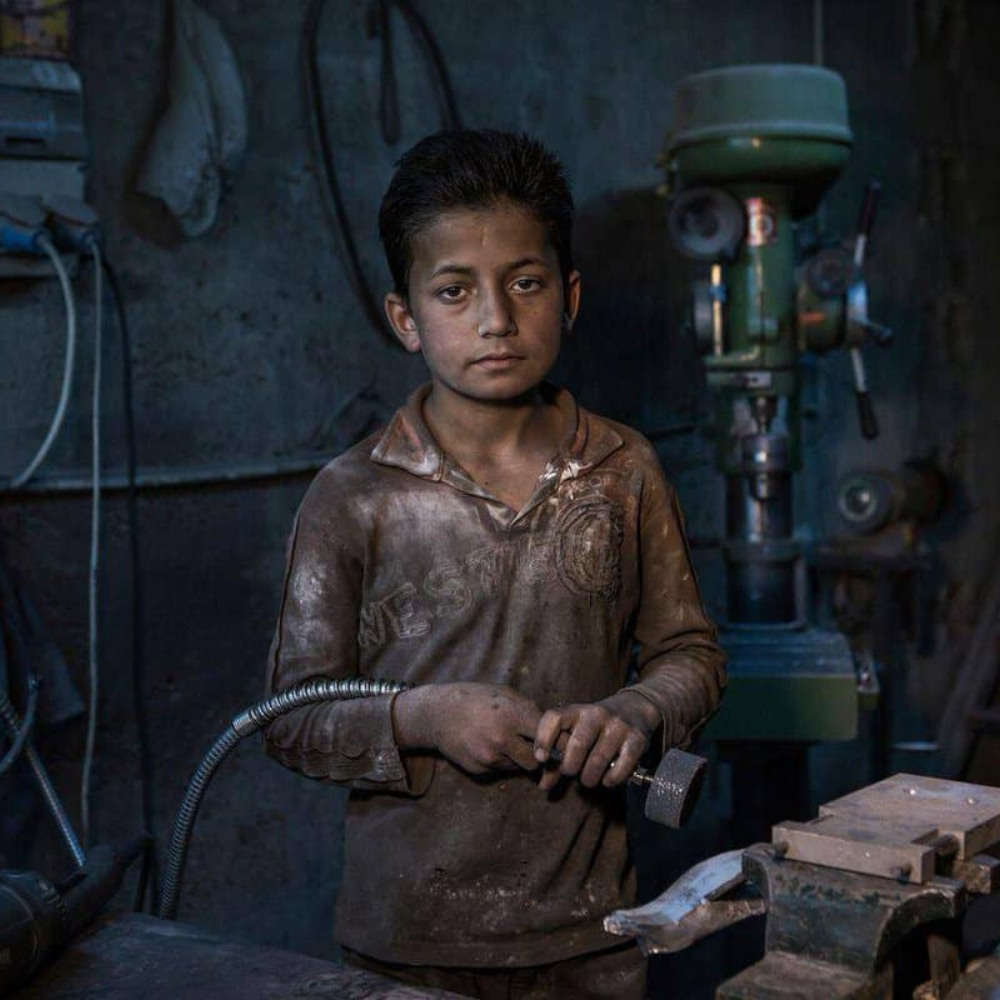- General Surgery Instruments
- Orthopedic & Spine
- Neurosurgical
- Electrosurgical
- Non-Stick Bipolar Forceps
- European Irrigation Bipolar Forceps
- Monopolar Cables
- USA 2 Pin Bipolar Forceps
- European Non-Stick Bipolar Forceps
- Bipolar Artery Sealer
- Diathermy Instruments
- Bipolar Electrodes
- Disposable Bipolar Forceps
- Electrodes 4.0mm
- Electrosurgical For Gynecology
- European Bipolar Forceps
- Gynecology
- ENT
- Cardiovascular
Child Labour - Surgivalley CSR
Child Labour – Surgivalley CSR
Child labor poses serious risks to children’s physical well-being and severely limits their access to education. Widening income disparities have compelled millions of children to make an impossible choice between attending school and supporting their families. According to the International Labour Organization (ILO), over 215 million children aged between five and seventeen are engaged in illegal, hazardous, or exploitative work. Driven by extreme financial hardship, children as young as 14 are legally allowed to work in certain sectors. Many are found laboring in commercial farming, fishing, manufacturing, mining, and domestic service. Tragically, some are coerced into illegal and dangerous activities such as drug trafficking, prostitution, or even forced recruitment into armed groups.
CHILD LABOUR: IDENTIFYING THE CHARACTERISTICS
It is disconcerting that child labour prevents kids from getting an education, which is a significant setback for their personal growth and development. Since time is limited, the relationship between a child’s occupation and academic performance varies according to the kind of occupation and the number of hours spent on it. Those who work for extended periods are more likely to not attend school. Here are some characteristics of child labour:
- Breaking a country’s legal age.
- Danger to children’s health (whether physical, psychological, or behavioural).
- Severe forms of mistreatment, such as those seen in child slavery, exploitation, debt bonding, slave labour, and criminal activity.
- It discourages kids from going to school.
- Making use of children to subvert labour norms

Child Labour: Are Schooling & Labour casually related?
Child labor can lead to physical injuries and hinder a child’s access to education. Growing income disparities have forced millions of children to choose between going to school and supporting their families. According to the ILO, 215 million children between the ages of five and seventeen are involved in illegal, hazardous, or exploitative work. Due to severe financial hardships, children as young as 14 are legally permitted to work in various fields. Many children are employed in commercial farming, fishing, manufacturing, mining, and domestic work. Some are even forced into illegal activities such as drug trafficking, prostitution, or joining armed forces.
Child Labor: A Global Challenge
Child labor remains a deeply pressing issue impacting millions of children across the globe. It involves the exploitation of young lives through work that strips them of their childhood, denies them access to education, and violates their fundamental rights. Rather than attending school and experiencing the joys of their formative years, these children are subjected to hazardous, exhausting, and often inhumane labor conditions—robbing them of their future and their potential.
Causes of Child Labor
Several factors contribute to child labor, including poverty, lack of education, and economic disparities. In many low-income families, children are compelled to work to support their households. The absence of affordable education also leaves them with no choice but to enter the workforce at an early age. Additionally, economic inequality and poor enforcement of labor laws exacerbate this issue.
Impact on Children
Child labor has severe consequences on a child’s physical, mental, and emotional well-being. It exposes them to dangerous working conditions, leading to injuries and health issues. Moreover, it hinders their education, limiting their opportunities for a better future. The burden of adult responsibilities at a young age also affects their mental health, leading to stress and anxiety.
Forms of Child Labor
Child labor takes various forms, including work in agriculture, manufacturing, mining, and domestic services. Some children are involved in dangerous tasks such as handling chemicals, operating heavy machinery, or working in hazardous environments. In extreme cases, they are exploited in illegal activities like drug trafficking, prostitution, or armed conflicts.
Efforts to Combat Child Labor
To eliminate child labor, governments, international organizations, and non-profits are working together. Laws and regulations are being enforced to prohibit child labor and ensure children’s right to education. Initiatives like free schooling, financial support for poor families, and community awareness programs are helping reduce child labor rates.
Conclusion
Child labor is a violation of human rights and deprives children of their right to a safe, healthy, and educated childhood. It is crucial to address the root causes, such as poverty and lack of education, while enforcing strict laws against child labor. By working together as a global community, we can provide every child the opportunity to grow, learn, and thrive in a safe environment.


